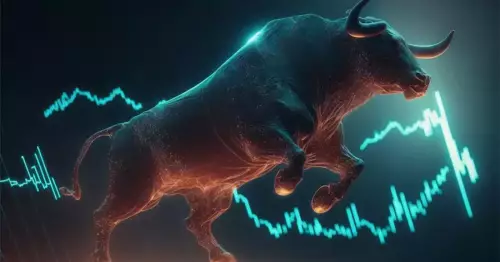 |
|
 |
|
 |
|
 |
|
 |
|
 |
|
 |
|
 |
|
 |
|
 |
|
 |
|
 |
|
 |
|
 |
|
 |
|

Institutions are slowly embracing onchain technology, with some even tokenizing real-world assets (RWAs) like U.S. Treasury funds and church chapels. But what exactly is driving this institutional interest in onchain tech? And what can we expect next in 2025?
KEY POINTS
Blockchain technology and cryptocurrency have been around for more than a decade, but it was only last year when the industry saw an influx of institutional interest, fueled by the approval of spot Bitcoin (BTC) and Ethereum (ETH) exchange-traded traded funds (ETFs).
As more users lean toward onchain solutions, traditional financial firms are apparently tuning in, observing trends, and becoming more forward-looking in their outlooks of the blockchain sector.
Some regulatory clarity, especially around cryptocurrencies such as Bitcoin, Ethereum, and XRP, helped improve the views of traditional financial firms, but the gap in regulatory clarity has yet to be filled. Will 2025 finally see the gap bridged to attract more institutions onchain?
Institutions are slowly embracing onchain technology, with some even tokenizing real-world assets (RWAs) like U.S. Treasury funds and church chapels. But what exactly is driving this institutional interest in onchain tech? And what can we expect next in 2025?
Institutions slowly embracing onchain tech
More regulatory clarity in some aspects of blockchain technology and the first-mover brave steps some traditional firms took truly helped increase the hype among institutions.
Real-world asset (RWA) tokenization also contributed significantly. For instance, the assets under management (AUM) of onchain U.S. Treasury funds tripled in 2024 to reach $2.48 billion.
In a more unconventional take, a Colorado church network tokenized its main chapel as part of the fundraising efforts to purchase the physical building that costs $2.5 million. The development was dubbed as the beginning of the age of decentralized faith.
Aside from RWA tokenization, there’s also the rise in blockchain-based innovations, Brett Tejpaul, the head of Coinbase Institutional, told International Business Times.
Such innovations include the rise of Layer 2 solutions that helped blockchain shine even more. Some of the key players in 2024’s Layer 2 rise were Arbitrum and Polygon.
However, institutions have yet to dive deep into the vast world of blockchain. "Institutions are still navigating operational complexities, such as secure asset management, workflow integration, and compliance requirements," Tejpaul explained.
"Solutions like Coinbase's Prime Onchain Wallet are addressing these needs by simplifying onchain interactions with features like customizable policy engines, dynamic fees, and API-based automation," he added.
There’s much institutions need to learn and explore about onchain technology, but based on last year’s developments, it can be safe to say they have made significant progress.
What’s next for institutional onchain adoption in 2025?
For Tejpaul, "broader institutional participation hinges on delivering trusted, easy-to-use infrastructure."
Blockchain can be complex for traditional firms, and the complexities have affected the speed with which institutions are adopting onchain solutions. By 2025, onchain providers will have realized that intuitive interfaces will only attract more institutions.
Tejpaul also revealed that Coinbase Institutional expects "more institutions to explore automated access to blockchain through advanced tools, further normalizing onchain operations in 2025." Such tools may include offerings around trading, custody, and onchain participation.
In the early days of blockchain technology, it would have been unthinkable for institutions to jump into the "niche" segment, but more than a decade since Bitcoin was first introduced to the world, blockchain is now recognized as an innovation with the power to reshape the future of finance.
免責聲明:info@kdj.com
所提供的資訊並非交易建議。 kDJ.com對任何基於本文提供的資訊進行的投資不承擔任何責任。加密貨幣波動性較大,建議您充分研究後謹慎投資!
如果您認為本網站使用的內容侵犯了您的版權,請立即聯絡我們(info@kdj.com),我們將及時刪除。
-

- XRP、企業國庫券和外匯對沖:全球金融的新時代?
- 2025-11-06 02:00:00
- 探索 XRP 如何成為企業外匯對沖的潛在解決方案,為全球交易提供速度和成本效率。
-

-

-

-

- 探索加密貨幣格局:Web3、比特幣和以太坊的投資機會
- 2025-11-06 00:00:12
- 探索不斷發展的加密投資世界,重點關注 Web3 創新、比特幣的穩定性和以太坊的智能合約功能。
-

-

-

-

- 提升您的技能:農村消防員在線消防培訓
- 2025-11-05 23:55:26
- 了解 RF-DASH 等在線消防培訓計劃如何為農村消防員提供重要的農業安全和健康知識。






























































